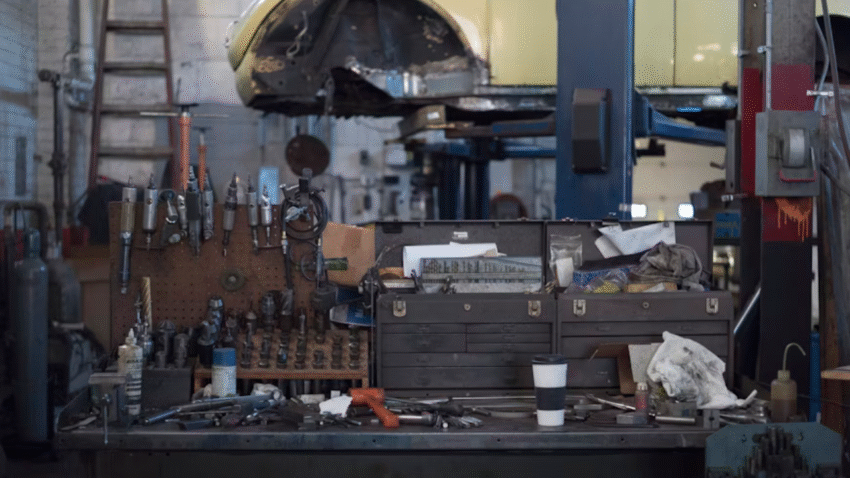Introduction
If you want to give your garage a quick and dramatic upgrade without the mess of paint or epoxy, interlocking floor tiles are an excellent choice. They’re durable, easy to clean, and come in a variety of colors and patterns. Learning how to install interlocking garage floor tiles will help you create a professional-looking floor that’s both functional and stylish—often in just a few hours.
Why Interlocking Floor Tiles Matter for Your Garage
These tiles aren’t just about looks—they offer several practical benefits:
- Fast installation: No adhesives or curing time needed.
- Durability: Resistant to stains, chemicals, and heavy vehicle traffic.
- Comfort: Softer underfoot than bare concrete, making standing and working easier.
- Easy maintenance: Damaged tiles can be replaced individually without redoing the whole floor.
- Custom design: Mix colors and patterns for a personalized look.
Whether you use your garage as a workshop, storage area, or car space, interlocking tiles can improve comfort and appearance instantly.
Step-by-Step Guide to Installing Interlocking Garage Floor Tiles
1. Choose the Right Type of Tile
Garage floor tiles come in different materials:
- PVC (Polyvinyl Chloride): Flexible, comfortable, and great for work areas.
- Polypropylene: Rigid, durable, and excellent for heavy loads like vehicles.
- Rubber: Provides excellent cushioning, ideal for gyms or standing workstations.
Pro Tip: For garages where you park cars, choose tiles with a load rating that matches or exceeds the weight of your vehicle.
2. Gather Tools and Materials
You’ll need:
- Interlocking garage floor tiles
- Rubber mallet
- Tape measure
- Utility knife or fine-tooth saw (for cutting tiles)
- Straight edge or ruler
- Broom or vacuum
3. Prepare the Garage Floor
Clear the Area
Remove vehicles, tools, and storage items from the garage.
Clean the Floor
Sweep or vacuum thoroughly to remove dust, dirt, and debris. If there are oil stains, use a degreaser to clean them—this prevents residue from transferring to your new tiles.
Note: You don’t need to repair cracks or imperfections before installing tiles, but large bumps should be smoothed for a better fit.
4. Plan Your Layout
- Decide where you want to start—most people begin in a front corner near the garage door.
- Consider your tile pattern and color scheme before snapping tiles together.
- Dry lay a few rows to see how the tiles align with walls and doorways.
Pro Tip: Start from the center if you want a symmetrical pattern, especially with multi-color designs.
5. Begin Installing the Tiles
- Start at Your Chosen Point
Lay the first tile with its interlocking tabs facing the direction of the next tiles you’ll install. - Work Row by Row
Snap each tile into place by aligning the tabs and pressing down. Use a rubber mallet to tap the edges gently for a snug fit. - Check Alignment
After every few rows, step back to make sure your tiles are straight. Adjust as needed before continuing.
6. Cutting Tiles to Fit Edges
When you reach walls or obstacles:
- Measure the space carefully.
- Mark the tile with a straight edge.
- Cut with a utility knife (for softer PVC or rubber tiles) or a fine-tooth saw (for rigid polypropylene tiles).
- Place the cut edge against the wall for a clean look.
Safety Note: Wear gloves when cutting to protect your hands from sharp edges.
7. Install Transition Edges (Optional)
If your garage tiles extend to the driveway or connect to another room, use ramped edges for a smooth transition. These reduce trip hazards and make it easier to roll vehicles or equipment onto the tiles.
8. Inspect and Finish
Walk the entire floor to ensure all tiles are securely locked. Tap any loose connections with the rubber mallet. Wipe or mop the surface to remove dust from installation.
Common Mistakes to Avoid
- Mistake: Skipping floor cleaning.
Solution: Dirt and debris under tiles can cause unevenness or wear. - Mistake: Starting in the wrong spot.
Solution: Plan your layout so cut tiles end up at the edges, not in visible central areas. - Mistake: Forcing tiles together without alignment.
Solution: Align tabs properly before pressing or tapping into place. - Mistake: Not leaving expansion gaps in hot climates.
Solution: Leave a small gap (about 1/4 inch) around the perimeter to allow for tile expansion in heat. - Mistake: Using the wrong type of tile for vehicle traffic.
Solution: Choose heavy-duty tiles rated for your specific garage use.
Extra Garage Tips & Hacks
- Mix Colors for Style: Create checkerboard patterns, racing stripes, or custom designs.
- Replace Damaged Tiles Quickly: Swap out a single tile instead of redoing the whole floor.
- Combine with Wall Organization: Pair your new floor with pegboards or shelving to complete your garage makeover.
For a different type of upgrade, see our guide on How to Epoxy Coat Your Garage Floor Step-by-Step for a permanent finish alternative.
Conclusion
Installing interlocking garage floor tiles is one of the fastest and easiest ways to transform your garage. With minimal tools, no adhesives, and simple snap-together installation, you can have a durable, stylish, and low-maintenance floor in just a few hours.
Final Tip: Take your time planning the layout before snapping the first tiles in place—good preparation leads to a flawless finish.
CTA: Bookmark this guide and use it to give your garage floor a professional makeover that’s as functional as it is attractive.
